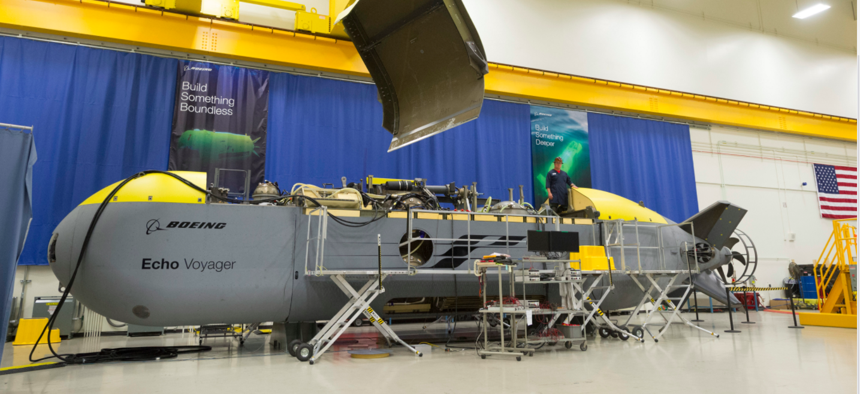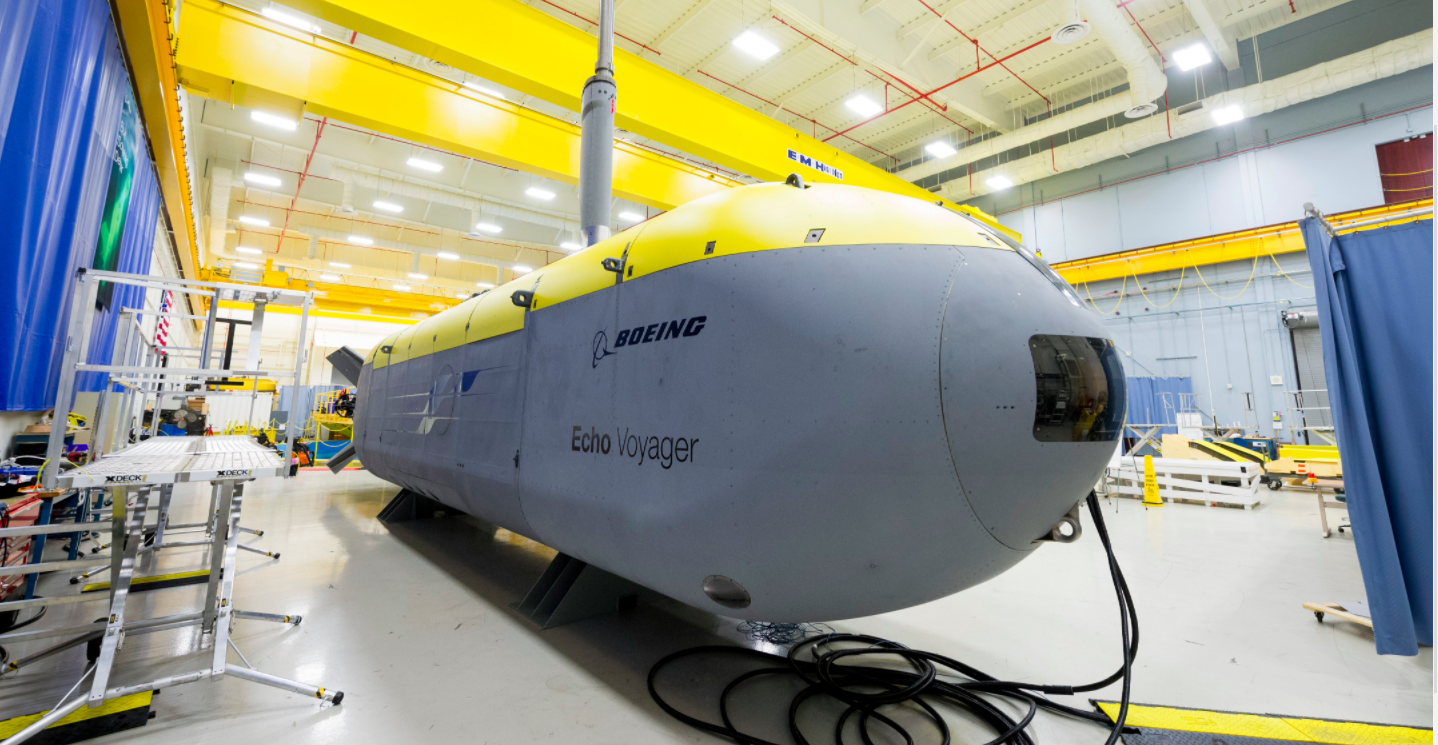
The Echo Voyager team places a panel onto the vehicle. Boeing
Boeing, Shipbuilder Team Up to Build Giant Underwater Drones
The aerospace firm is bringing Huntington Ingalls on to help with its 50-ton Echo Voyager — and that’s just for starters.
America’s largest military shipbuilder and its largest aerospace firm are teaming up to build underwater drones for the U.S. Navy.
The partnership between Huntington Ingalls and Boeing comes as the Navy begins work on what it calls extra large unmanned undersea vehicles — drones that just might change how the military fights.
“This partnership provides the Navy a cost-effective, low-risk path to meet the emergent needs that prompted the Navy’s Advanced Undersea Prototyping program,” Darryl Davis, the president of Boeing Phantom Works, said in a statement. “We are combining Boeing’s preeminent [unmanned underwater vehicle] maritime engineering team with our nation’s leading shipbuilder and Navy technical services company to get operational vehicles to the Navy years ahead of the standard acquisition process.”
In recent months, Boeing has been touting its Echo Voyager, a 50-ton autonomous underwater drone that it is testing in the Pacific off the coast of California. In December, Deputy Defense Secretary Bob Work visited the Huntington Beach factory that is working on the project.
“It's impressive in every way,” Work said at the time. “I can't wait for them to get it in the water and test it.”
The unmanned submarine is 51 feet long. But you can stick a 34-foot payload module in the middle of it. Think of it like adding rail cars to a train. Various modules will allow the drone to accomplish different types of missions, like dropping mines, firing missiles or collecting data.

The “capabilities that it has, being able to drop things out of the bottom as well as launch things out of the top, long endurance, deep-diving depth, persistence, all of those things were really, really exciting to see,” Work said.
The Navy, in its 2018 budget submission to Congress last month, said it plans to conduct trials with existing underwater drones and continue developing new types of technology before formally adding the craft to the fleet.
"This will help develop experience and demonstrate launch, communications, command and control, navigation, endurance, recovery, payload feasibility, and mission planning and execution for [extra large unmanned underwater vehicles],” say the service budget documents.
Boeing and Huntington Ingalls will work together on underwater drone projects at design and production facilities in Huntington Beach; Newport News, Virginia; and Panama City, Florida.
“We look forward to a long relationship with Boeing as we embark together to field this unmanned force-multiplier for the Navy,” Andy Green, executive vice president of Huntington Ingalls Industries and president of the company’s Technical Solutions division said in a statement. “I am confident this team will continue redefining the autonomy paradigm for UUVs.”




